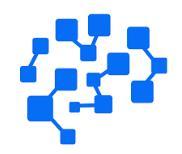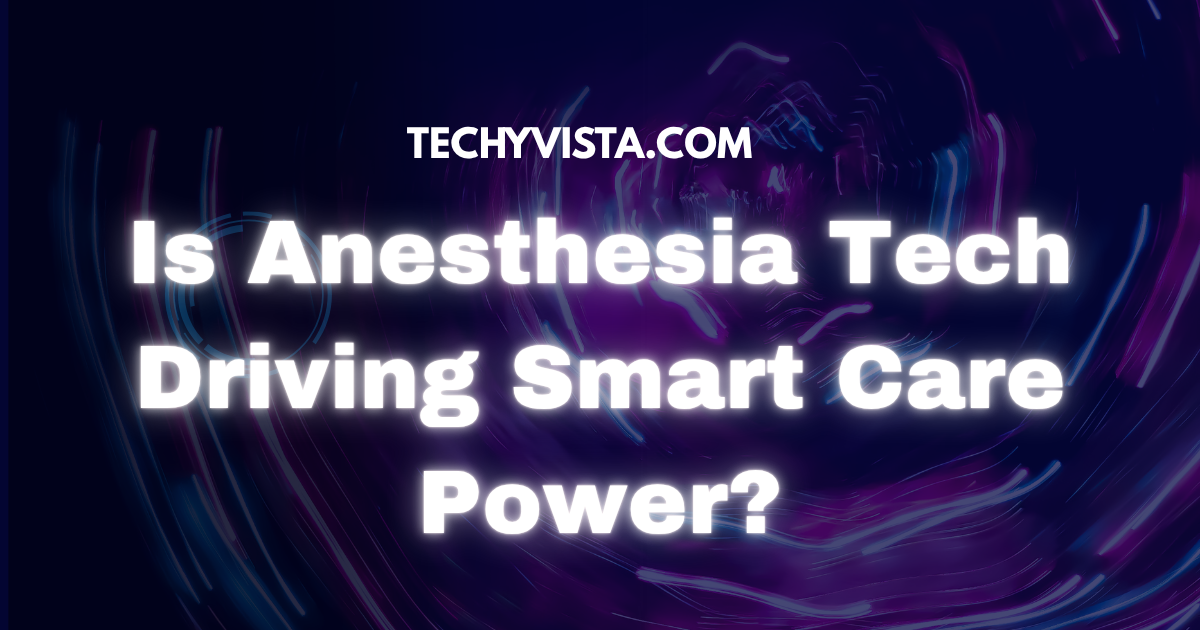Table of Contents
Beginning
Increasingly, medical interventions are more complex, and healthcare facilities have adopted intelligent anesthesia technologies that can deliver patient care, safety, and precision. This kind of modification is a radical move in technology-equipped health care that provides a double advantage to both doctors and patients. Anesthesia technology is the main contributor to the improvement of the healthcare system by the use of smart devices, monitoring technology, and AI analytics.
It is the provision of real-time data, automated alerts, and digital precision by the present-day intelligent anesthesia solutions that empower clinicians to rapidly and safely decide. These improvements lessen the chances of harm, simplify the flow of work, and elevate the quality of care given at the most critical times. Anesthesia is the leading example of the evolution of smart care, as technology is the main factor in the medicine of the future.
Introduction to Anesthesia Tech and Its Role in Smart Care
Why is Anesthesia so Important in Current Healthcare Systems?
Anesthesia tech is the one that provides the exactness, efficiency, and patient safety which are the triple demands of 21st-century healthcare. It alleviates the complexity of surgical procedures and mitigates the probability of mistakes. These devices have become the indispensable elements of facilities’ ability to provide trustworthy and high-quality care.
How can smart technology improve the effectiveness of anesthesia?
Smart care technologies capture and analyze real-time data with the help of AI to provide decision support to the medical team while enhancing operating room workflow and optimizing device usage. This leads to good patient outcomes and safer anesthesia management in the long run.
Key Features of Anesthesia Powering Smart Patient Care
Advanced Monitoring Systems and Digital Precision Tools
Contemporary anesthesia tech also comes with the most modern drug administration and vital signs monitoring equipment. The digital precision tools minimize the chances of human mistakes and obtain the right dosing.
AI-Assisted Decision Support in Anesthesia Management
AI tools gather and assess patient data and thereby dictate the best anesthesia timing and dosage in the form of suggestions. This lowers the risks and makes it possible to get fast, informed decisions. Clinicians can employ AI to upgrade the quality and safety of therapy.
Connectivity and Real-Time Data Insights for Clinicians
Quick data availability is a result of smart anesthesia instruments that link with hospital networks. When we have the benefit of real-time data, doctors can monitor a ward and support an intervention without delay. Not only is this collaboration better for the workflow, but it also provides better care for patients.
How Anesthesia Technology Enhances Modern Patient Safety?
Advanced anesthesia technology, for example, achieves patient safety recording vital signs and giving instant alerts during operations. Clinicians, thanks to advanced digital systems, are now enabled to spot risk factors ahead of time and thus decide quicker and more accurately. Automated dose controls are the ultimate helpers in achieving consistent anesthesia delivery while at the same time lessening the likelihood of human error. For optimal safety, smart sensors are responsible for monitoring patient reactions during procedures. Taken together, these innovations make every patient environment safer and more reliable.
User Insights, Expert Opinions, and Real-World Performance
What Anesthesia Professionals Say about Anesthesia?
Doctors and nurses talk about the need for smart alerts and AI-assisted monitoring as something very helpful. They have seen the decrease of human error while decision-making becomes better and faster during the operations. In short, anesthesia technicians get a lot of credits from the staff for being one of the main factors at work that leads to increased clinician confidence and the overall quality of care.
Comparisons with Regular Non-Smart Anesthesia Instruments
When it comes to accuracy, monitoring, and safety of the patients, smart anesthesia instruments are superior to traditional ones. They provide a level of automatized support and up-to-the-minute insights that older instruments lack. Smart technology is, therefore, the technology of choice in today’s highly developed medical facilities.
Role of Intelligent Machines in Elevating Anesthesia Accuracy
By furnishing up-to-the-minute data and automatized clues during medical interventions, the Anesthesia Tech is undoubtedly the key to significantly elevating the precision of anesthesia. Since these devices correct even the tiniest errors in the monitoring of the vital functions, they indirectly but surely cut down on human mistakes that can sometimes be fatal. Alerts powered by AI and smart sensors always guarantee the taking of the shortest and safest route to achieve modification of the patient’s condition. In this way, an intelligent anesthesia tool lessens the number of steps that the staff must take in decision-making, and as a result, the practice becomes quicker and more trustworthy. On top of that, they contribute to the consolidation of control, trust, and modern trends in anesthesia practices.
Benefits of Smart Care Integration with Anesthesia Technology
Automated Systems Contribute Significantly to Patient Safety
The automatic Anesthesia Tech devices in the operation room do a good job in the exact adjustment of the medications and they also keep a close and continuous watch on the vital signs. As a result, the risk of any surgical complications is greatly minimized. The patients are the ones who get the ultimate benefit in this case as they are put in extremely safe hands and can fully trust the regularity of the procedures that must be done in the most honest way possible.
Medical Teams Gain in Efficiency and Workflow
The use of smart anesthesia devices in the process of the performance of the tasks that are repetitive brings time-saving benefits to doctors and nurses. The device also helps in the quick and fluent execution of the data recording and decision-making in the critical situations. Medical teams, who should be really good at monitoring, will not be doing it manually anymore; they will see to it that the patient is taken care of well.
What Are the Clinical Benefits of Tech-Based Anesthesia?
The use of AI in medicine is first and foremost focused on the process of anesthesia, where it has to analyze the data of patients for better execution of the drugs. Among the various benefits that come from the anesthesia collaborative intelligence, it is foremost in patients’ rehabilitation and a general rise in surgical success rate, henceforth fewer post-operation complications and more precise dosing.
Challenges and limitations of Anesthesia
In spite of the breakthrough, the most recent anesthesia technology is still facing challenges in relaxed environments. Smaller hospitals will have a hard time adopting it because of the high installation and maintenance costs. The medicine staff needs a lot of training before they can fully use the technology, and hence the slow pace of adoption. There are times when hardware or software components limit the accuracy of real-time data. Still, on the other hand, solutions to these issues are being developed, which indicates that the problems are not always at a standstill.
Future Innovations in Anesthesia Tech and Smart Care Power
Anesthesia technology aims at the implementation of intelligent, AI-powered systems that enhance precision and minimize mistakes from human factors. One of the major safety enhancements that is most likely to be realized first is the predictive analytics to foresee the patient’s reaction. It will be possible for clinicians to closely monitor a patient´s condition in real-time thanks to the deep data captured by smart sensors. By linking contemporary hospital networks, a fully integrated, data-driven care environment will be the outcome of such innovations. In fact, these developments position anesthetic technology as the main driver of smart healthcare progress in the coming years.
FAQs on Anesthesia Tech and Its Smart Care Capabilities
Is Smart Anesthesia Safer for Patients?
Smart anesthesia tech indeed promotes the safety of a patient in the aspects of real-time monitoring, automated alerts, and giving the accurate dosing. The patient benefits from the most precise, controlled, and reliable care.
How Does anesthesia support better decision making?
Now that we have modern anesthetic practices, physicians have access to real data, predictive analytics and AI-enhanced recommendations to support decision making. With this support, doctors can make optimal decisions very rapidly. The device helps to solve the issue of limited time and reduces the work pressure of doctors in emergency situations.
What Future Smart Care Features Can We Expect in Anesthesia?
Advanced anesthesia concepts of the future will have AI integration, predictive algorithms, and networked devices to offer proactive care solutions. Together, all these attributes demonstrate the evolution of improving healthcare processes into enhanced, more precise, and patient-focused care.
Conclusion
In short, when you integrate those smart systems, AI support, and high-tech monitoring technologies, anesthesia technology will revolutionize healthcare. For the healthcare team and patients, the advancements in medical technology have led to better recommendations, ultimately increasing clinical effectiveness and patient safety. The positive aspects of accuracy and reliability outweigh the negative aspects of added expense and the need for training, but the challenges do exist. The coming of AI-powered and connected anesthesia solutions is a strong indication of a better patient care future. Hence, anesthetic technology is the main factor behind the emergence of intelligent, safe, and efficient healthcare.

